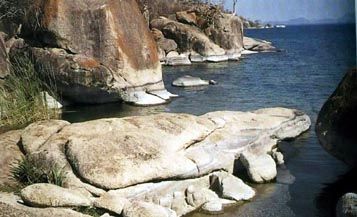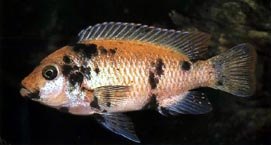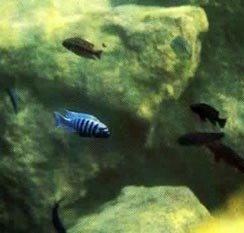
Submitted articles



Almost a year ago when I started to keep fish, I seemed to bump with the word “Cichlid” every way I turned. To surf the web and stump over some kind of cichlid would be almost a daily occurrence. As a result, I decided to investigate further to see what the heck was the apparent obsession all about.
Well, later on, I found out what all hoopla was about. The word “cichlidae” refers to an enormous fish family, which inhabits almost all corners of the globe. Among them, a group seems to always deserve a separate section: the African cichlids.
This term “African Cichlids” refer to cichlids inhabiting the three largest lakes of the African continent: Lake Victoria, Lake Malawi and Lake Tanganyika. Of these three, the last two are rift lakes; Lake Victoria has larger surface area but it is relatively shallow (Axelrod, 16). The cichlids in these lakes are quite varied raging from real small species to huge ones; “… the smallest cichlid is reported to be Lamprologus multifasciatus, which only measures 35 mm” (1 inch and a ½) … “the largest is Boulengerochromis microlepis, which attains a length of over 900 mm” (over 3 feet). (Axelrod, 29)
The largest number of cichlids species can be found in Lake Malawi that boasts an extraordinary number of “255 described species” (Axelrod, 28). As a result, it is safe to say that most African cichlids you are likely to encounter in your local fish store are either descendants or direct imports from this lake.

Before describing these cichlids in detail, there is another interesting and important factor for the fish keeper to know: the lakes’ water chemistry. The water of these lakes is alkaline in contrast with the pH most aquarists are used to dealing with which is for the most part, neutral or slightly acidic. These lakes all have pH values above neutral thus, “…Malawi 7.7 to 8.6… Tanganyika 8.6 to 9.2… Victoria 7.1 to 9.0…” (Axelrod, 16)
For the purposes of this article I will concentrate to probably the most kept African cichlids: The Mbuna. “Mbuna” is an African word pronounced “um-boo-na” and it literally means “rockfish” (Boruchowitz, 1). The Mbuna cichlid are all cichlids which inhabit the rocky coasts of Lake Malawi although, not all Malawi cichlids are rock dwellers; Lake Malawi also houses other kind of cichlids like the peacock (utaka) cichlids and some species of the Haplocrhomis family which inhabit open areas within the lake.
Mbunas come in various shapes and sizes. They also display an array of interesting peculiarities that seem to be adaptations to the biotope of the lakes. For example, some Malawi cichlids have developed large fleshy lips that seem to be sensory in nature, which they use to press against rocks to find food. Others, like the Labeotropheous, have developed what seems to be a projecting snout (If one sees them up close, this snout makes them look like they were very, very sad…) also; it seems, for better feeding. (Axel rod, 41, 44). However, despite these incredible adaptations, the Mbuna are probably the most interesting because of the polymorphism of some of the species. Polymorphism means “many forms” and it refers to the varied colors, patterns, bars and so on, found in certain species.
In lake Malawi the king of polymorphism is the Pseudotropeous Zebra (Axelrod, 45) because it displays an incredible collection of beautiful colors and patters. The Pesudotropheous Zebra “comes in several different patterns such as dark vertical bars on a light background (called the BB morph) or orange with black blotches (OB) and in several solid colors (white, blue, red, orange, etc.). Variations on the basic pattern also occur.” (Axelrod, 45).

|

|
|
|
|
I myself keep some BB, OB and variations (such a BB which is light orange with bluish bars).
Another incredible trait of this fascinating family of fish is their breeding techniques. If you check Badman’s section on breeding you will find the “mouthbreeders”. This word refers to fish that either fertilize and keep their batch safe in their mouth or fertilize the eggs outside and then, pick up the eggs and keep them in their mouth until they become full formed and free swimming fry. Just to be able to watch this spectacle is good enough reason to consider keeping this fish.
This is pretty much the secret to keeping African cichlids. They are not, contrary to popular belief, a hard fish although I agree that beginners should start to experience with other kind of fish.
Do consider keeping this fish. They have wonderful personalities and interact greatly with their keepers. Besides, their incredible behaviors will keep you entertained and relaxed for a long, long time.


|
|

Email: badman@hotmail.com